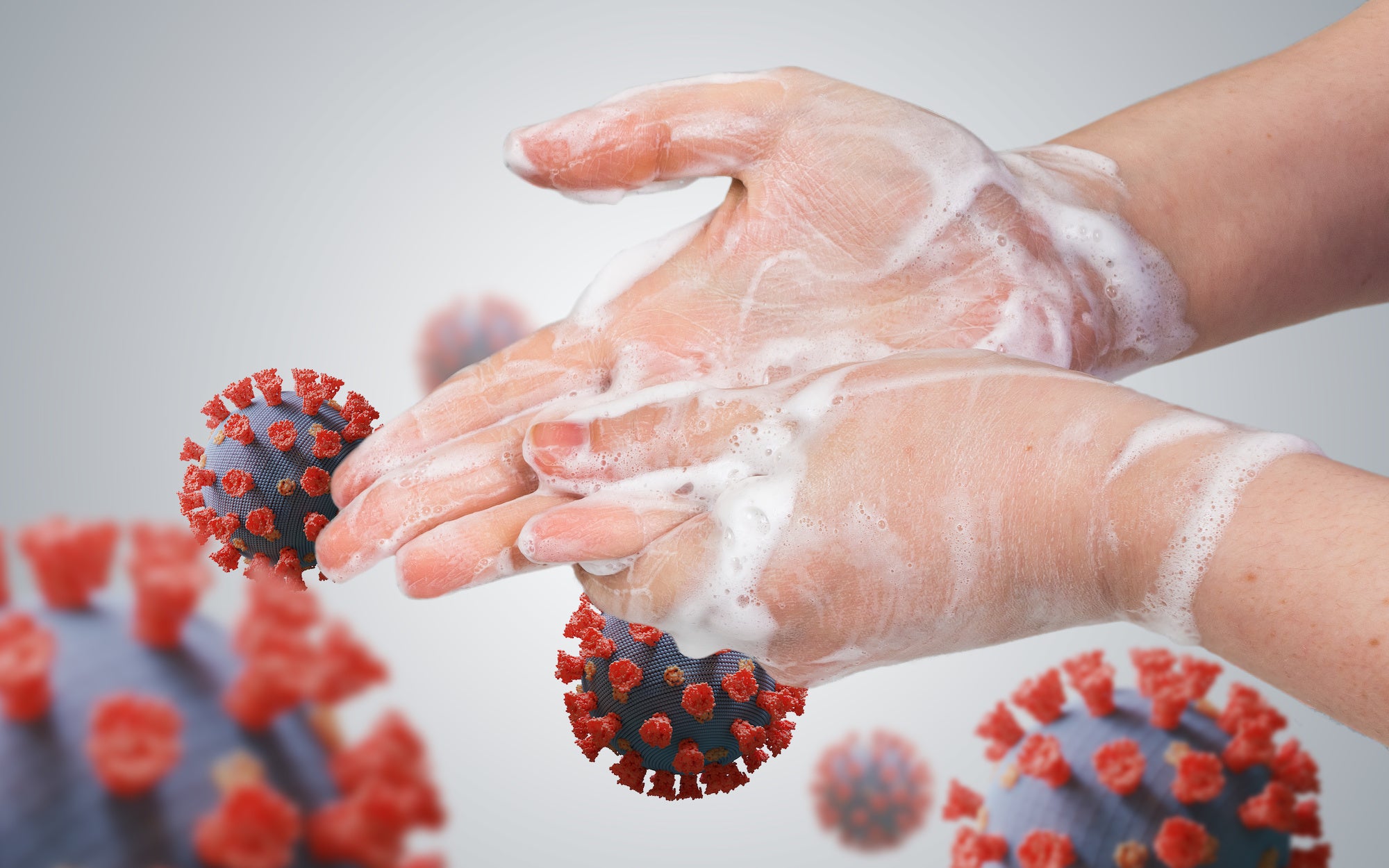
How to Prevent Dry or Cracked Skin From Excessive Hand Washing and Sanitizing Due to COVID-19
Since the coronavirus scare began, we have been told to do two things. Wash our hands and social distance.
Most of us have done just that. We've started adapting to this new way of life, where our biggest form of human contact is via a computer screen.
And our hand washing game has gone into overtime.
Although we are doing a great job practicing good hygiene, our hands bare the burden and are in desperate need of repair. Washing our hands more frequently strips our skin's natural oils causing them to get dry, crack, and sometimes bleed. When the skin is broken, whether it is minor or severe, it increases our vulnerability to germs and other bacterias.
So what do we do about it?
Luckily, we have the necessary artillery to heal and protect our skin while in "hand to hand" combat, and we are here to share these tips with you.
Before we hit the battleground with our healthy hand advice here's what the experts have to say about hand hygiene amidst COVID-19.

What The Experts Are Saying
The Center for Disease Control and Prevention has informed us about the importance of proper hand hygiene in response to the global COVID-19 crisis.
Here's a statement from the CDC website: "Handwashing mechanically removes pathogens, while laboratory data demonstrate that 60% ethanol and 70% isopropanol inactivates viruses that are genetically related to, and with similar physical properties as, the 2019-nCoV."
The CDC recommends cleaning your hands often, including washing with soap and water for at least 20 seconds after being in public. They warn us to avoid touching our eyes, nose, and mouth with unwashed hands.
When soap and water are not available to use hand sanitizer with at least 60% alcohol. Cover all surfaces of the hands including in between and the tops of fingers and rub until dry.
The World Health Organization has also given us guidelines on how and when to properly wash our hands.

Here's the bottom line for hand hygiene while we are all working together to flatten the coronavirus curve:
WHEN TO WASH WITH SOAP AND WATER
Wash your hands with soap and water whenever they are readily available. Wash your hands after going to public places or taking care of the sick.
Wash your hands after sneezing, coughing, or blowing your nose.
Wash your hands before cooking, before eating, or before touching anything that comes in contact with your face, like putting on your makeup.
Always wash your hands with soap and water when they are visibly dirty.
And of course, wash your hands after using the toilet . . . please.
WHEN TO USE HAND SANITIZER
Bring hand sanitizer with you when going out in public or when you don't have water and soap nearby.
Use hand sanitizer after touching doorknobs, grocery carts, or anything else someone may have touched before you.
Sanitize your hands after pumping gas for your car or going through the taco bell drive-thru.
And above all, don't touch your face.
Okay, now that we know the deal with keeping ourselves protected from invisible COVID-19 germs, let's delve right into protecting our hands from the drying effects of handwashing.
KEEPING YOUR HANDS MOISTURIZED
Use Gentle Cleanser
Wash your hands with gentle soaps that preferably have no fragrance. Avoid using dish soap. What is designed to cut the grease from your frying pans is no bueno for your delicate hands.
Hydrate Your Skin Often
Right after using hand sanitizer or washing your hands apply a good quality hydrating topical. Hand sanitizers with alcohol are extremely drying so apply moisturizing creams immediately, or as often as you can.
Avoid moisturizers and skincare topicals with fragrances and chemicals that irritate sensitive skin.

We recommend using a pea-sized drop of our medical-grade Oxygenating Hydro-Matrix on your hands throughout the day. Although originally formulated for use post-procedure on the face, Hydro-Matrix comes to the rescue when our hands need it the most. Aloe based Hydro-Matrix delivers with lasting moisture, while also promoting skin renewal. It isn't greasy like other lotions and creams, so it's perfect for an all-over hand remedy.

Wear Gloves
Wear gloves when going to the store so you won't have to sanitize as often. If your hands are already cracking from being overly dry, gloves will act as a protective shield from any bacteria or germs getting into the open wounds.
Also put gloves on when your hands are immersed in water, such as when washing dishes or cleaning around the house with surface cleaners, to prevent stripping your skin's natural oils.

Avoid Excessive Heat
Heat can dry the skin rapidly. Avoid excessive heat by using hand towels or air-drying as opposed to hand dryers in public bathrooms.
Protect your hands with oils or a good moisturizer before using a hairdryer.
And of course, use sunblock when spending time outdoors.
HELPING DRY & CRACKED HANDS
Protect Cracks & Cuts
If you're hands get so dry from over washing and sanitizing that they begin to crack and bleed, it is time to treat and protect the wounds. Open cuts are prone to infection and are wide open for germs to enter. Always wear gloves over open skin when going out in public or performing chores at home.

Use bandaids and wraps to cover any bleeding. Once the wound is no longer bleeding you can follow up with a topical such as Oxygenetix Hydro-Matrix. Hydro-Matrix is recommended by medical professionals around the world for it's ability to calm compromised skin and help the skin look and feel younger.

Treat Overnight
One great way to prevent dry hands is to treat them while you sleep! This can easily be done by lathering your favorite hand cream all over your hands before bed and putting soft cotton gloves or socks over them. Keep them covered as long as you can so your hands have time to absorb and lock in the moisture.
Severe Cases
If you have done all you can to keep your hands moisturized and protected, but they don't improve, you may have an underlying skin condition. Seek medical attention if you show symptoms of infection or bleeding.
In Conclusion
Although it is important to keep washing our hands and sanitizing when necessary, it is also important to keep our bodies in good shape. We hope these tips help keep you and your hands happy, healthy and moisturized.
From all of us at Oxygenetix, take care and be well.
Sources:



コメントを書く
このサイトはhCaptchaによって保護されており、hCaptchaプライバシーポリシーおよび利用規約が適用されます。